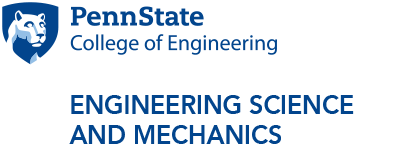A lifetime of antenna research
Abstract: Professor Breakall retired from the EE Department in December 2022, after spending 33 years in that position, he now is Professor Emeritus. He was a professor at the Naval Postgraduate School before that for 2 years and also a Project Engineer at the Lawrence Livermore National Laboratory for 5 years. He has been interested in antennas since the young age of 10 years old and credits his interest and participation in Amateur Radio as one of the main inspirations that led to his rewarding and innovative career in antennas. In his talk, he will go over some of the antenna ideas that motivated him to take his career path. One of his first passions was how to make a small antenna work as well as a big antenna at frequencies where the wavelength is large. His idea did not exactly work but was important enough to develop a relationship with Prof. Ferraro in EE who was the main antenna professor and his future advisor and colleague. This led to his work for many years with the Arecibo Observatory in Puerto Rico and antenna modeling and design at many other facilities and systems. He will describe some interesting facts and new concepts on the most widely used antennas used in Amateur Radio and elsewhere, the classical half-wavelength dipole and Yagi. He will present many other innovations that he invented over the years in antennas related to Amateur Radio, and also in scientific, government, and commercial applications.
Biography: Dr. James K. Breakall received B.S. and M.S. degrees in Electrical Engineering from Penn State University and a Ph.D. in Electrical Engineering and Applied Physics from Case Western Reserve University, Cleveland, OH, and has over 50 years of experience in numerical electromagnetics and antennas. He was a Project Engineer at the Lawrence Livermore National Laboratory (LLNL), Livermore, CA, and an Associate Professor at the Naval Postgraduate School (NPGS), Monterey, CA. Presently, he is Professor Emeritus of Electrical Engineering after retiring in December 2022 with 33 years on the faculty at Penn State. Dr. Breakall was first at Arecibo Observatory (1000 ft dish in Puerto Rico) in 1974 as the first Summer Student from Penn State. He worked on the design of another 100 ft dish that was used as an interferometer with the main 1000 ft dish. In 1977, he was a NSF Resident graduate student at the Arecibo Observatory on his Ph.D. research on antenna analysis and radar probing of the ionosphere using the 430 MHz incoherent scatter. At LLNL, he and his group worked on the development of the Numerical Electromagnetics Code (NEC), the first sophisticated antenna modeling program. Other significant projects that he has worked on were the designs of the HAARP facility in Alaska (patent received), both HF facilities at Arecibo (Islote and the recent Cassegrain sub-reflector design), and multiple feeds for inside the Gregorian Dome. He received a patent and the R&D 100 Award for the Kinstar low profile AM broadcast antenna. He has been and is a consultant to the Army, Air Force, and Navy, and Industry on antenna design and radio propagation. He also has designed many Amateur Radio commercial antennas including the very popular Ham Radio Skyhawk Yagi antenna, and he is the inventor of the Optimized Wideband Antenna (OWA). Dr. Breakall is also a life senior member of the IEEE Antennas and Propagation Society, IEEE Broadcast Technology Society, Eta Kappa Nu, International Union of Radio Science Commission B, IEEE Wave Propagation and Standards Committee, has been an Associate Editor for the Radio Science journal, and served as an Arecibo Observatory Users and Scientific Advising Committee Member. He has been a frequent speaker at the Dayton Hamvention Antenna Forum. He has graduated numerous graduate students and received many awards over the years. In 2017, Dr. Breakall was awarded the prestigious Sarnoff Citation from the Radio Club of America (RCA), the oldest wireless society. He was elected as a Director to the Board in 2018 and 2021 and is the Chairman of their Technical Symposiums. He also serves on the RCA Scholarship Committee. He was elevated to Fellow of that society in 2022. In May 2023, he was awarded the Technical Achievement Award for all of Amateur Radio for his innovative contributions to that community. His Amateur Radio callsign is WA3FET.
Event Contact: Bethany Illig



